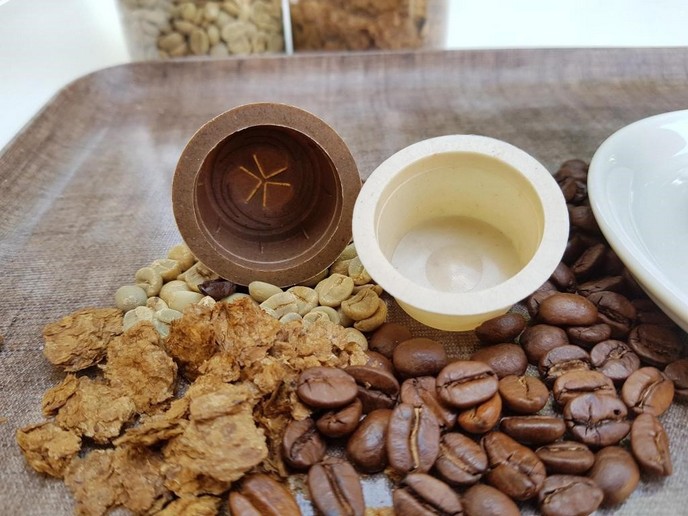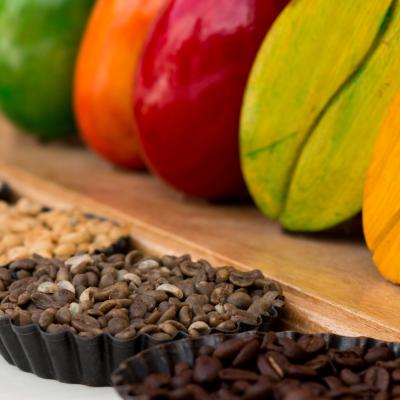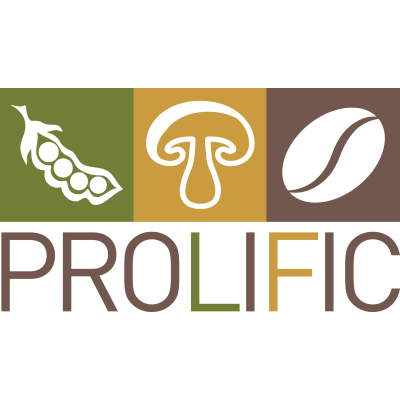Agricultural by-products have typically been overlooked as sources of high-value bioactive molecules. But at a time when commercial competition for quality feedstocks is on the rise, finding a use for agro-industrial sidestreams is critical. The Prolific project received funding from CBE JU to explore market potentialities for three possible feedstocks.
Chickpeas and peas, button caps and coffee green beans and silver skins
The project management team integrated by Project Manager Rita Hochstrat, Scientific Coordinator Annalisa Tassoni, and Administrative Coordinator Philippe Corvini, investigated legumes, mushrooms and coffee. These were chosen for study because they represent high growth or consumption within the EU, thus increasing the availability of the feedstocks. Further, all three biomass types contain valuable molecules, extractable via a cascade of processes.
Legumes provided a valuable source of proteins, and as a secondary extraction, fibres. Mushrooms were an excellent source of chitosan, a type of sugar molecule with many biomedical applications. Coffee green beans and silver skins, the flakey residue of roasted coffee beans, proved to be a good source of polyphenols, which have antioxidant properties.
A highlight of Prolific is the production of the first bio-based coffee capsule using coffee skin.
Philippe Corvini, Administrative Coordinator
Researchers concentrated on developing processes that are environmentally friendly, scalable and can easily be applied to existing industry infrastructure. Many of the processes evaluated are applicable to feedstocks beyond those studied by Prolific. One of the green processes explored was mild aqueous extraction of proteins from legumes. Another included ultrasound-assisted extraction, which was used to extract coffee proteins. A highly active phenolic fraction was most effectively obtained from coffee green beans by subcritical water extraction.
Pasta, paste and packaging
Prolific explored 18 product prototypes. The products they developed included food, animal feed, cosmetics and biodegradable packaging. While the project did limited consumer testing of the prototypes, some of the products will be market-ready in as little as 2 years.

Legumes not suitable for sale delivered proteins that could be added to bread, pasta, and cereal flakes. After removing the protein, the fibrous residues could be used for producing rigid, biodegradable packaging, such as cosmetic jars. According to Philippe Corvini, 'a highlight of Prolific is the production of the first bio-based coffee capsule bodies using coffee silver skin as filler or coffee derived antioxidant extracts in the composite material formulation.'
The antioxidant extract from coffee green beans proved equally effective as commercial compounds in preserving sausages and meat patties. This product did not alter the taste or texture of the meat and may well be a candidate for market uptake.
'Among the prototypes of the cosmetic sector,' Corvini notes, 'the most successful one produced within Prolific was an antimicrobial toothpaste including chitosan extract from fungi residues.' Chitosan is typically sourced from crustaceans and has a wide variety of biomedical applications. Using a fungi-derived source of chitosan makes the resulting toothpaste a vegan product. Along with encouraging consumer tests, this feature marks the toothpaste as likely for market uptake in the near future.
In addition to exploring a plethora of marketable products utilising agro-industry sidestreams, Prolific also advanced techniques for extraction of bioactive molecules. As Europe continues to build towards a circular bioeconomy, turning agro-industry sidestreams into viable feedstocks is critical to optimising quality of life while also protecting the environment.

